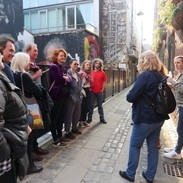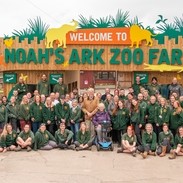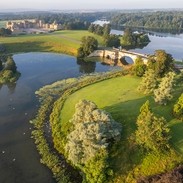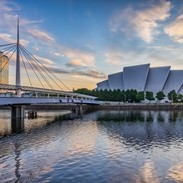B: How is everyone talking about sustainability?
Key Takeaways Section B
In a nutshell
Briefly review the history of sustainability approaches.
Consider this in relation to the concept of regenerative tourism.
How can your business make a positive impact?
What's in a name
Business loves a good acronym and new terminology. For example, in a few short years we have gone from Personnel, to HR, to Talent Management. Sustainability is no different. In this book we refer to Sustainability and Regenerative Tourism. For a bit of clarity, here is a quick overview of how language in this area has evolved.
Corporate Social Responsibility (CSR)
When businesses began to look at doing things better, the topic was broadly described as Corporate Social Responsibility, or CSR for short. This was a long-standing approach to doing the right thing and centred mainly on waiting to see what profit was generated in a trading year and then distributing some of it to good causes at the end. It was something of an afterthought to the standard business model.
CSR to sustainability
In more recent times, forward-thinking businesses started to make responsible behaviour an integral part of their business approach. This approach was built into the core of the business and made an integral part of the way a company worked, taking a stand on moral purpose from the beginning of the financial year, not just at the end.
These businesses are often described as sustainable, and now sustainability has become a catch-all term for businesses that are aiming to do the right thing. Many people assume that this is just the ‘green stuff’ – the environmental issues. It certainly does include these, but it is much more than that.
Reducing sustainability to a single (usually green) issue does not, however, do it justice. This is sometimes referred to as carbon tunnel vision (a term coined by Dr Jan Konietzko). This is where people focus just on carbon emissions and climate change, instead of viewing the whole picture including areas such as biodiversity loss, societal inequality, poverty and justice, etc.
Sustainability to Environmental, Social, Governance (ESG)
The acronym ESG is now also widely used. ESG stands for Environmental, Social, Governance. The social part covers all activities in relation to people. Social sustainability involves creating places that promote well-being, understanding what people need from their work environment, and the relationships that develop there.
ESG to regenerative tourism
Sustainability and ESG focus primarily on doing as little harm as possible to people and the planet. A regenerative business approach however aims to go one step further and not only reduce your negative impact but also increase the positive impact you have on the environment and society.
Regenerative tourism is the idea that tourism should leave a place better than it was before. Its principal aim is for visitors to have a positive impact on their holiday destination, leaving it in a better condition than they found it. Their holidays should of course also have a positive and regenerative effect on them. This involves revitalising and regenerating by contributing to a positive cycle of impacts on local communities, environments and economies.
Regenerative tourism offers an important set of solutions to rethink and rebuild the tourism industry. It aims to improve local economies and preserve local cultures and biodiversity while offering memorable, authentic experiences to guests and allowing destinations to flourish.
Principles of regenerative tourism
We discuss the UN SDGs in section 2.1., but in brief the regenerative tourism principles include ideas such as:
- Holistic understanding (acknowledging that everything is connected to everything else).
- Collaboration (partnerships leading to more effective outcomes).
- Diversity (helping to reduce risk and enhancing resilience).
- Inclusion (involving local communities to strengthen the overall ecosystem).
- Transforming and inspiring (creating experiences for guests that are life-changing through immersion in cultural heritage, folklore, gastronomy, landmarks and wildlife).
- Environmental responsibility (taking good care of the environment through sensitive management of natural resources and protection of fragile landscapes and wildlife).
- Cultural stewardship (protection of local cultural heritage, traditions and knowledge passed down the generations).
All of which can be summarised as leaving a place better than before or making a positive impact.
Photo by: VisitBritain/VisitEngland

Photo by: Shutterstock

bottom page nav
previous section
next section









